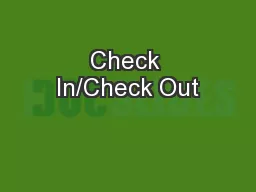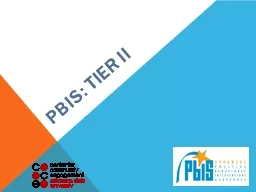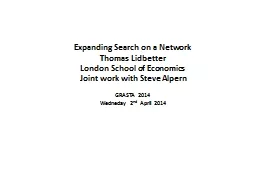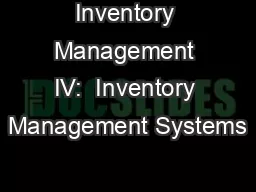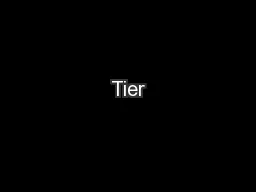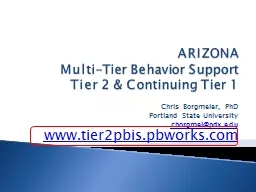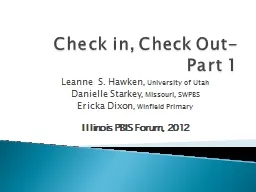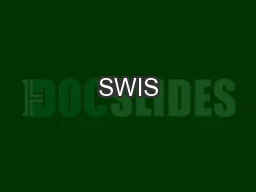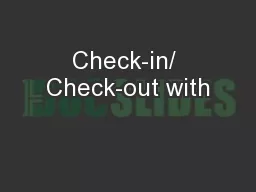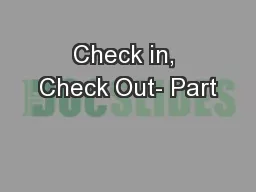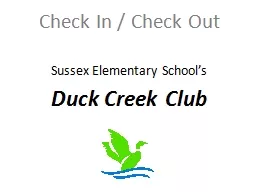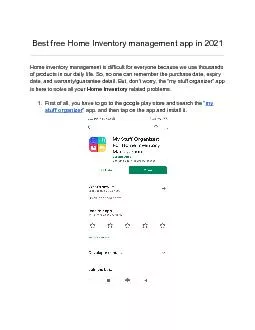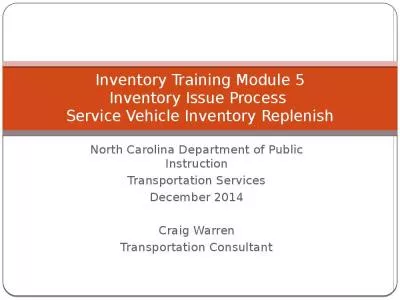PPT-Beyond Check-In/Check- Out (CICO): Expanding Your Inventory
Author : danika-pritchard | Published Date : 2017-11-18
Mandy Couturier Thatcher Brook Primary School Sarah Schoolcraft Williston Central School Goals We will practice identifying causes of challenging behavior function
Presentation Embed Code
Download Presentation
Download Presentation The PPT/PDF document "Beyond Check-In/Check- Out (CICO): Expan..." is the property of its rightful owner. Permission is granted to download and print the materials on this website for personal, non-commercial use only, and to display it on your personal computer provided you do not modify the materials and that you retain all copyright notices contained in the materials. By downloading content from our website, you accept the terms of this agreement.
Beyond Check-In/Check- Out (CICO): Expanding Your Inventory: Transcript
Download Rules Of Document
"Beyond Check-In/Check- Out (CICO): Expanding Your Inventory"The content belongs to its owner. You may download and print it for personal use, without modification, and keep all copyright notices. By downloading, you agree to these terms.
Related Documents


